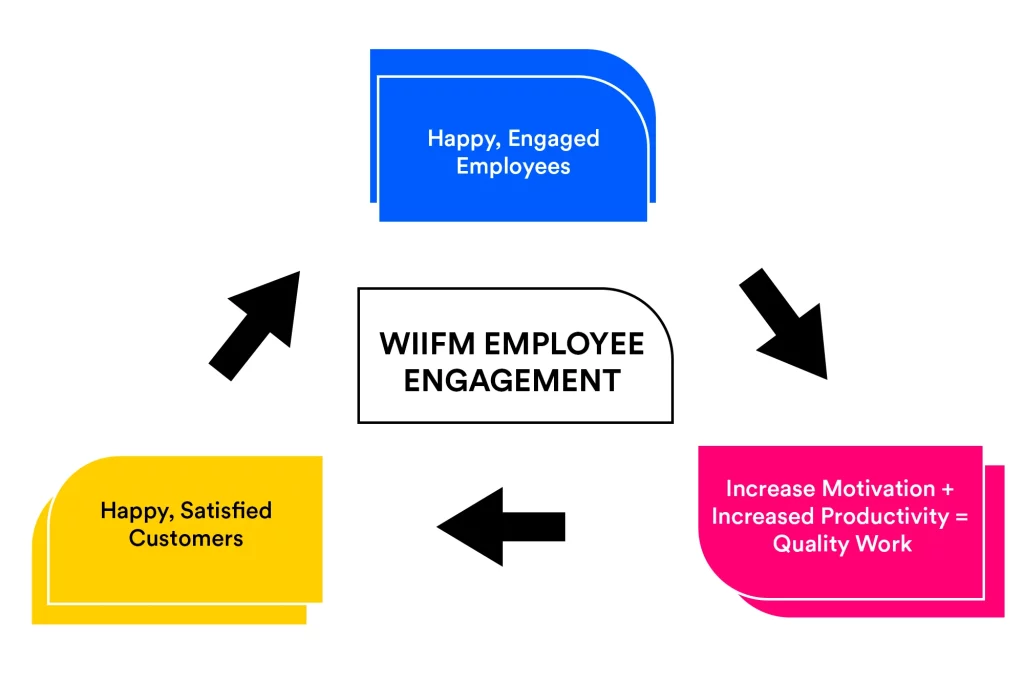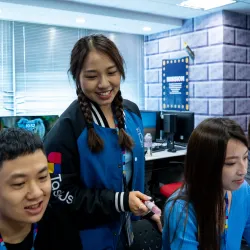Industry Knowledge
Employee Engagement and Training: ‘What’s In It For Me?’
Ever heard of using WIIFM in employee training and development? Learn all about the benefits of “What’s In It For Me”.
“I work to live, I don’t live to work!” says the majority of employees around the world who clock in about 40 hours a week. Between sleeping, preparing for work, commuting to and from the office, and performing actual work duties, an average employee spends 40% or more of their waking hours on work-related activities. With so much time and energy devoted to work, it’s crucial for employees to see what’s in it for them in their career, especially during the onboarding and training phase.
‘What’s In It For Me’ (WIIFM) in Training and Employee Engagement
President of Higher Level Group Daniel Decker defines this approach as“the stuff that shows how or why or what you have to sell or say matters to those who you are trying to sell or say it to. It’s the value proposition, the thing that makes them realize that what you’re offering is worth their money or their time.” Essentially, WIIFM is all about looking at employee training and talent management from the employee’s perspective. It’s a concept that can help create engaging training content that employees find genuinely valuable. WIIFM provides employees with insight into how training and education will impact them personally and can greatly increase employee engagement in the training and in the organization as a whole.
We’re past speculating how the pandemic has changed the way we work. With the global economy becoming increasingly challenging and unpredictable, companies are also putting a focus on talent management solutions relating to employee engagement, satisfaction, and the ultimate employee experience to attract and retain people. Organizations that understand the benefits of training employees centered on WIIFM have higher chances of creating and maintaining a work culture that motivates employees to succeed, excel in performance, and deliver beyond expectations. Engaged employees are more profitable; they can offer better customer experience and are more likely to stay in the company longer.

Employees who understand the benefits of the training are more engaged, grasp instructions more effectively, and are able to recall information more readily weeks and even months after the training. Understanding the “why” of a learning course can also give employees a better sense of purpose. Training should be designed to make the benefits crystal clear to the learners, resulting to learners seeing the direct link between the course and their success in their role.
Applying ‘What’s In It For Me’ (WIFM) in Employee Training
Let us now look at some ways we can implement WIIFM into a training curriculum.
At the beginning of onboarding and new hire training, present not only the objectives, but also the benefits a trainee can gain from them. In addition, the trainer must answer the “why’s” of each objective: “Why do I need this training? Why am I taking this module?” Provide examples of how a particular skill can improve their performance, how it can make work more enjoyable, and how it can reduce frustrations caused by skill gaps.
Keep going back to the WIIFM throughout the course to promote continued engagement and comprehension.
- Share personal experiences, especially as you gain credibility as an instructor and Subject Matter Expert.
- Give examples that show how the training materials can be implemented in real-life situations.
- Offer statistics, metrics, and facts to build credibility and show “cause and effect” scenarios.
- Ask more questions than you give answers to promote critical thinking and create action points in their company.
As employees grasp the idea of WIIFM and begin to understand the connection between the training and their ultimate success, the employees must practice what they learned. By role-playing, practicing, and completing mock simulations, the learners can then turn their newfound knowledge and theory into a skillset. These exercises give our brains an experience to associate and connect new content. This solidifies the understanding of “What’s In It For Me” and cements the purpose of the training, ensuring the learner stays motivated throughout the course.
By integrating WIIFM into the training curriculum early, reminding employees of the benefits throughout the course, and ultimately creating an engaging culture of learning, your employees will soon realize that training is the key to success. The result? Motivated, engaged, and loyal employees who are happy to contribute to the company’s goals.
References

We exist to empower people to deliver Ridiculously Good innovation to the world’s best companies.
Services







